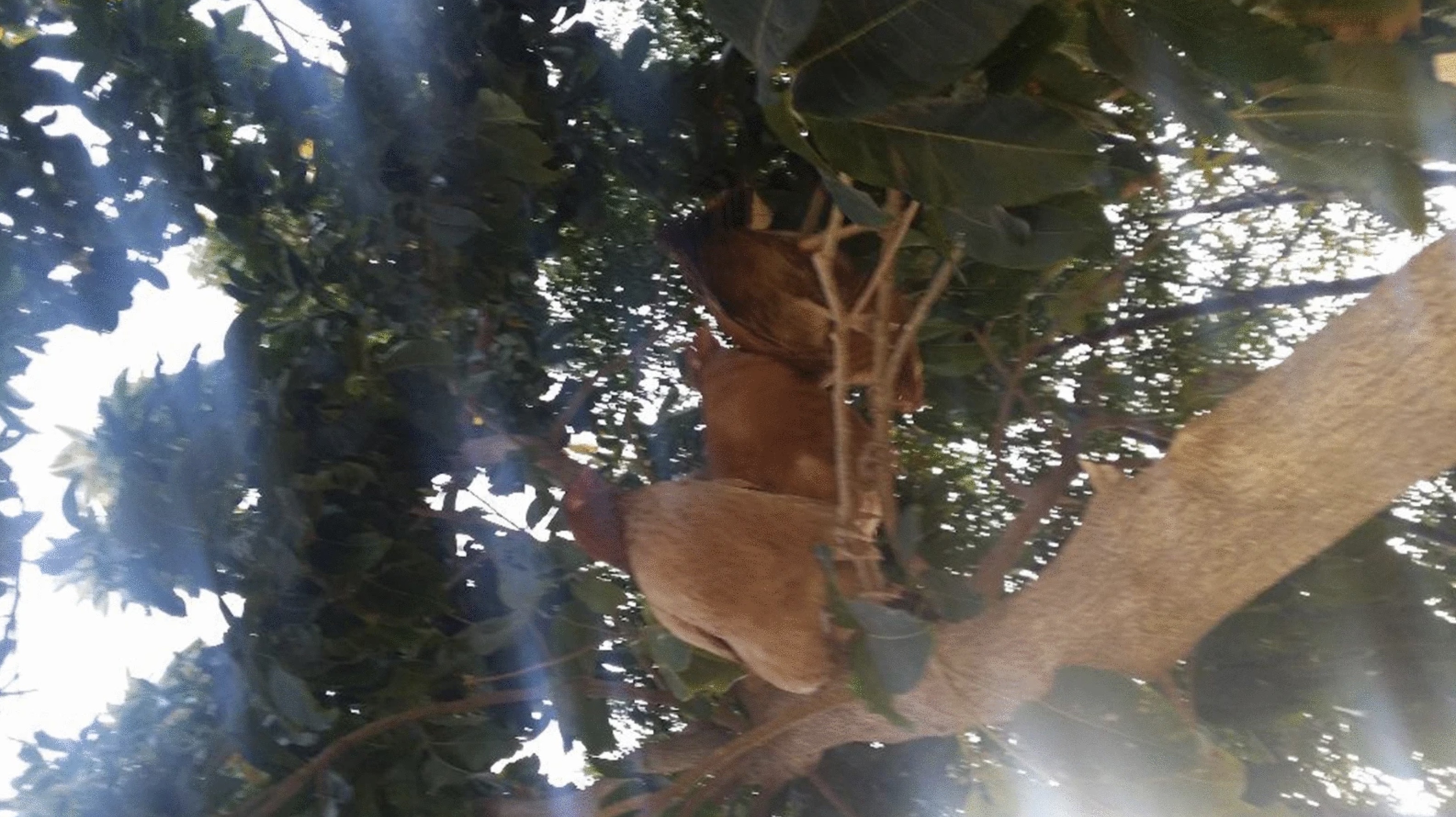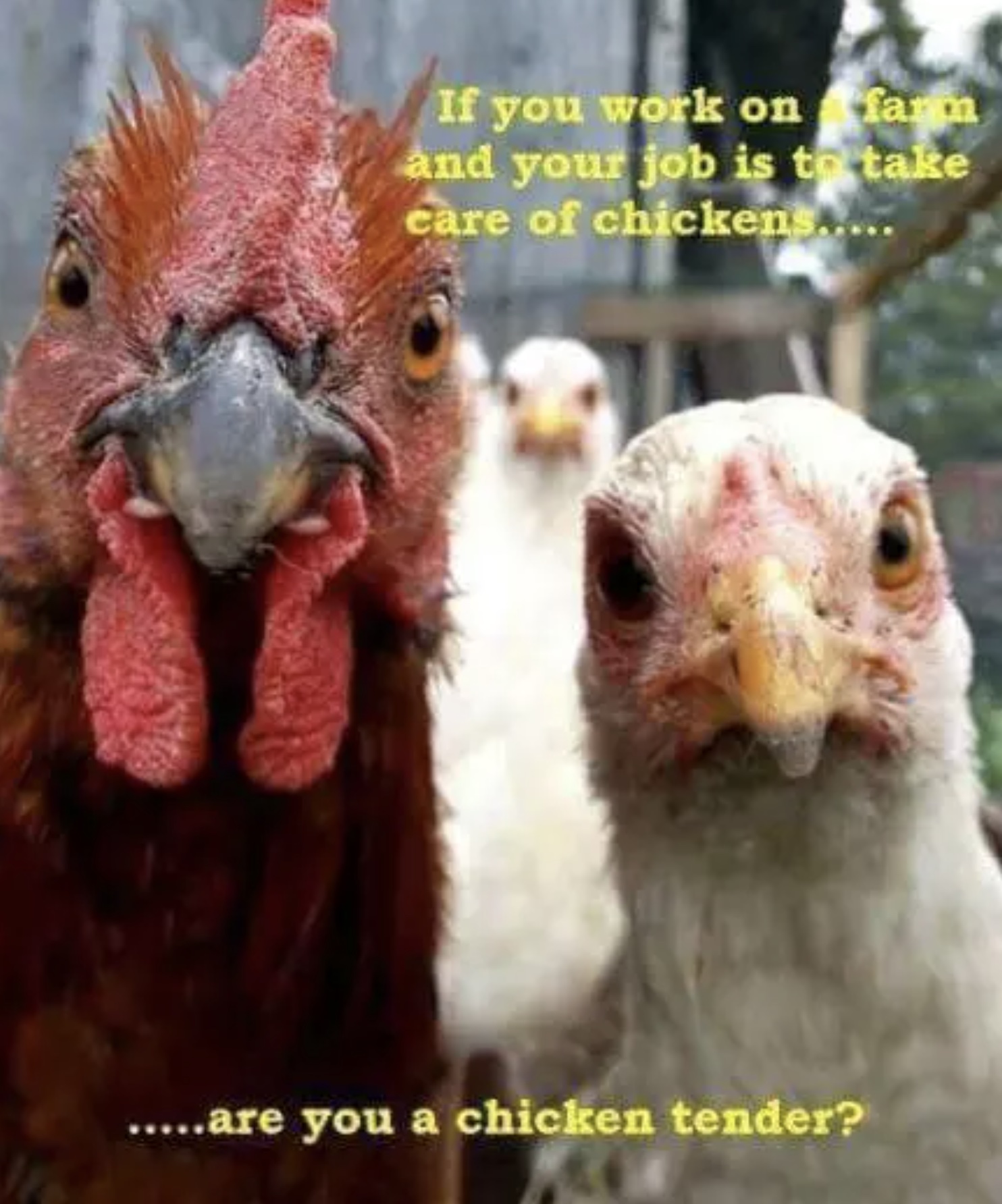Chickens in Trees
I was lucky enough to vacation in Kauai last year, one of the oldest Hawaiian islands. If you ever visit, the first thing that you’ll notice — the very first thing — is the chickens.
Everywhere.
At the airport terminal. In the car rental queue. In your motel parking lot. The afternoon I arrived, I took a Zoom call sitting on some grass, casting nervous glances at a rooster slowly approaching me like a Weeping Angel.
I grew used to them over the next couple days, seeing them (almost) like squirrels in your average U.S. city.
One evening, though, this facade of familiarity was quickly shattered. Looking over the motel balcony, I could hear occasional clucks, and I couldn’t localize the sources until I saw a chicken flutter up onto the branch of a short tree, joining its troupe.
Now, there are certain axioms you unwittingly live by, where a single moment makes you realize that these are not, in fact, axioms — your first earthquake breaks “the ground does not move,” or your first pair of glasses breaks “trees are blobs.” A colorblind friend had a moment in art class that broke “peanut butter is green.” For me, that moment in Kauai broke “chickens are not found in trees.”

Source. See this YouTube video for an example of birds in action.
As it turns out, my upbringing in New York was not representative of the rest of the world — free-roaming chickens roosting in trees is entirely common in many areas. It’s instinctual. Even domestic chickens raised in a coop aren’t exempt: when deprived of a perch off of the ground, they get frustrated and scared.[0]Night-time roosting in laying hens and the effect of thwarting access to perches. Olsson & Keeling (2000)
This doesn't mean that all chickens would prefer to roost in trees, if available. As I learned from a fantastic paper[1]The proclivity of free‑ranging indigenous village chickens for night‑time roosting in trees. Desta (2021) by T. Desta, a professor in Ethiopia, the proportion of chickens roosting in trees actually varies a lot, possibly due to environmental pressures like predators or hot ground temperature: e.g., only 1% do this in Myanmar, 8% in one part of Nigeria and 65% in another.
As I read further, roosting in trees began to sound like the topic of a self-help book for chickens. They gain confidence in their abilities to fly and evade predators. They experience less spread of disease, as the trees have good ventilation and are less soiled and crowded. They are quarantined from sick chickens that physically can’t make it up the trees. They have better access to tasty fruits and leaves. Roost in trees today — it’ll change your life! Or your money back!
Oh, before we get carried away — the predator situation does seem a bit more complicated. Chickens are better protected from overhead enemies like hawks, but can still be attacked by other birds. One chicken-keeper warned: “If you let your chickens roost in trees you will likely lose one every so often to the owls.”[2]Farming My Backyard: The Art of Chickens Roosting in Trees Predators like foxes or wolves can climb the trees and snatch chickens, but the shaking of branches can warn others to flutter away, even hopping to adjacent trees.
There’s also the risk of chickens being stolen, especially prized egg-laying ones, like in the Sherlockian section title “The case of a prolific hen experiencing theft” within a paper.[3]Predation and theft: the standing threats of the scavenging chicken production system. Desta (2023)
Probably for the reasons above, the top Google search suggestion is evident of many a frustrated chicken-keeper:

Coincidentally, writing that led me to search “name for a person who keeps chickens”. That was also pretty fruitful, leading me to:
I’d be remiss not to mention the alpha chicken. The alpha chicken gets to roost on the highest, safest branch of the tree when there’s danger. Very noble. If you build a domestic coop, you should have just one height of perch, or else the chickens will fight for the taller one.[4]Improving Village Chicken Production: A Manual for Field Workers and Trainers (2009) Desta writes that this acknowledges...“pecking order”... while this term did actually originate from chickens’ societal hierarchies, I still read it like the best kind of pun, where you’re not sure if it was intentional. I immediately regretted not sneaking such a pun into my own papers.
One of said pun-less papers led me to a conference in Hawaii, on the Big Island, a few months later. In place of the chickens, there were cats, at least near where I stayed in Kona. Lots of cats. We’d see them in trees too:

Source: Grace Luo, taken on a morning run we did together.
This begs the question: did the cats eat the chickens and take their place?
Apparently (well, according to Reddit), the cats usually leave the chickens alone. Adult chickens can be as large as cats, making them quite formidable opponents. Large populations of both feral chickens and feral cats coexist on many parts of the islands. There’s even a debate going on about whether the overpopulation of chickens or cats should be dealt with first. Chickens are noisy and destroy crops, yes, but they also create fertilizer and control insects. Cats kill native birds and spread disease. Yet: “The problem, experts say, is cats are cute.”[5]Chicken Control Plan Rekindles Debate: Wild Fowl or Feral Cats First? Jajko (2022)
In any case, controlling chicken population is hard. Hawaii lawmakers are trying to pass a 2024 bill allocating around $50,000 to control the population in Honolulu.[6]Hawaii SB2401. DOH; Feral Chickens; City and County of Honolulu; Expenditure Ceiling; Appropriation For now, chickens roam free in Kauai, drawing interest from tourists like me but are considered pests by many locals.
After that trip, I was on an evening walk in the Berkeley hills when I heard a weird cackle. Somewhere pretty high in a tree a little ways away. A few more cackles and I realized — could it be? — yes:
A turkey.
Citations
[0] Night-time roosting in laying hens and the effect of thwarting access to perches. Olsson & Keeling (2000)
[1] The proclivity of free‑ranging indigenous village chickens for night‑time roosting in trees. Desta (2021)
[2] Farming My Backyard: The Art of Chickens Roosting in Trees
[3] Predation and theft: the standing threats of the scavenging chicken production system. Desta (2023)
[4] Improving Village Chicken Production: A Manual for Field Workers and Trainers (2009)
[5] Chicken Control Plan Rekindles Debate: Wild Fowl or Feral Cats First? Jajko (2022)
[6] Hawaii SB2401. DOH; Feral Chickens; City and County of Honolulu; Expenditure Ceiling; Appropriation
Thanks to Ritwik Gupta for encouraging me to write this up!
